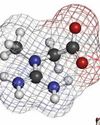
Urinary incontinence, the involuntary leakage of urine, can affect people of all ages, including the younger population. However, it is more commonly reported in women and those over 50. Various factors can contribute to incontinence. Age, constipation, increased body mass index (BMI), urinary tract infection and impaired physical function are common factors for both women and men. In women, factors like pregnancy and postpartum can strain, stretch and weaken the pelvic floor muscles (PFMs), while menopause or a history of hysterectomy can also contribute to urinary incontinence. For men, surgery for prostate cancer or benign prostate disease can increase the risk.
MANAGEMENT
There are several ways to manage urinary incontinence. The current evidence-based practice and management approach includes:
-
Behavioural and lifestyle modifications;
-
PFM training;
-
Pharmacological intervention; and eventually
-
Surgical intervention (for individuals experiencing incontinence symptoms who do not respond to previous management options)
LIFESTYLE MODIFICATION
Lifestyle modifications include reducing the consumption of drinks that can irritate the bladder lining, such as carbonated beverages, alcohol or caffeinated drinks (e.g. coffee and tea).
This irritation can lead to increased urinary frequency and urgency. It is also important to reduce overall fluid intake, especially in the evening, between dinner and bedtime, and to avoid drinking fluid two hours before sleep to reduce the frequency of urinating in the middle of the night. Research has shown that repeatedly waking up during the night over the long term may cause disturbed sleep, eventually affecting one’s quality of life and general health.
BEHAVOURIAL MODIFICATION
Esta historia es de la edición PRIME Magazine | Jun-July 2024 de PRIME Singapore.
Comience su prueba gratuita de Magzter GOLD de 7 días para acceder a miles de historias premium seleccionadas y a más de 9,000 revistas y periódicos.
Ya eres suscriptor ? Conectar
Esta historia es de la edición PRIME Magazine | Jun-July 2024 de PRIME Singapore.
Comience su prueba gratuita de Magzter GOLD de 7 días para acceder a miles de historias premium seleccionadas y a más de 9,000 revistas y periódicos.
Ya eres suscriptor? Conectar

Ceasing the Suffering
Discover Long-Standing Relief from Chronic Pains Without Surgery. (No, It is Not TCM!)

Tackling A New Job
Navigating Mid-Career Change: Effective Resume Writing Tips

Fight Off Fatigue
Chronic Fatigue: Is Hormonal Disharmony Draining Your Energy?

Are You Inflamm-Ageing?
How Your Favourite Festive Foods Are Secretly Causing Inflammation and Ageing You Faster

Lesser. Better.
The Advent of the Four-Day Workweek

Allied in Health
The Healthy Melody Seminar Experience - Sharing the Journey

CREATINE
The Compound That Drives Your Muscles and Health

Crispy Crunchy Chewy Temptations
A Guide to Healthy Festive Snacking - Part 2

A Hiro's Welcome
Veteran Japanese Star Hiroyuki Sanada Finally Rises to the Top of Hollywood with Shōgun

Mercury Rising
Understanding the Impact of Heatwaves on Health